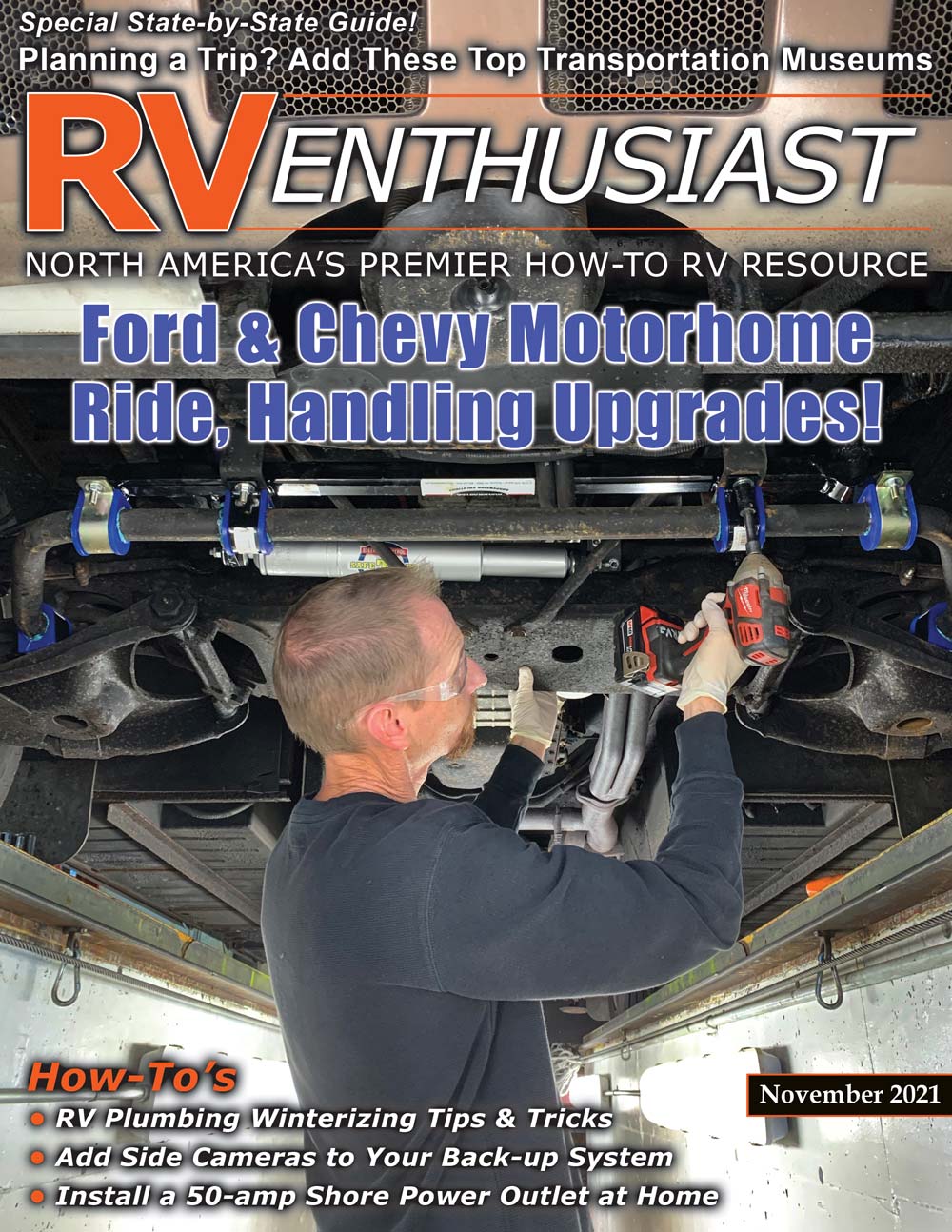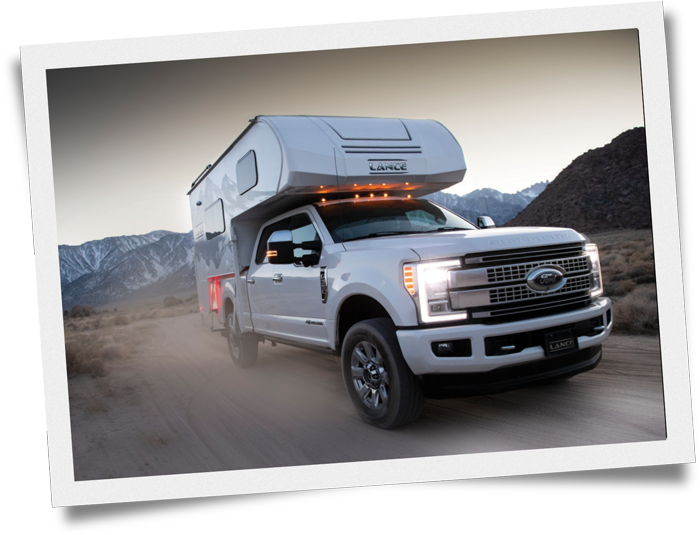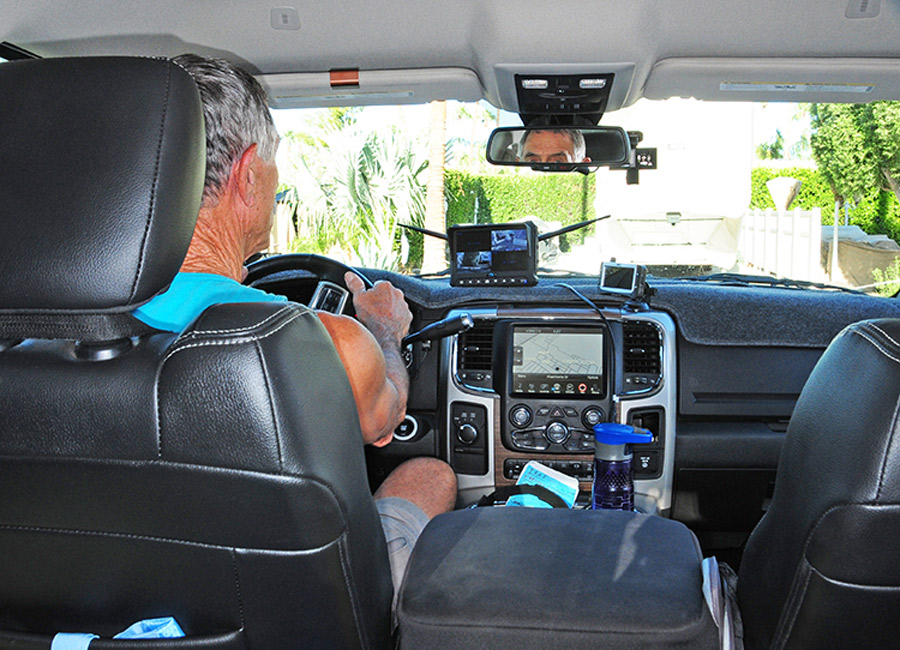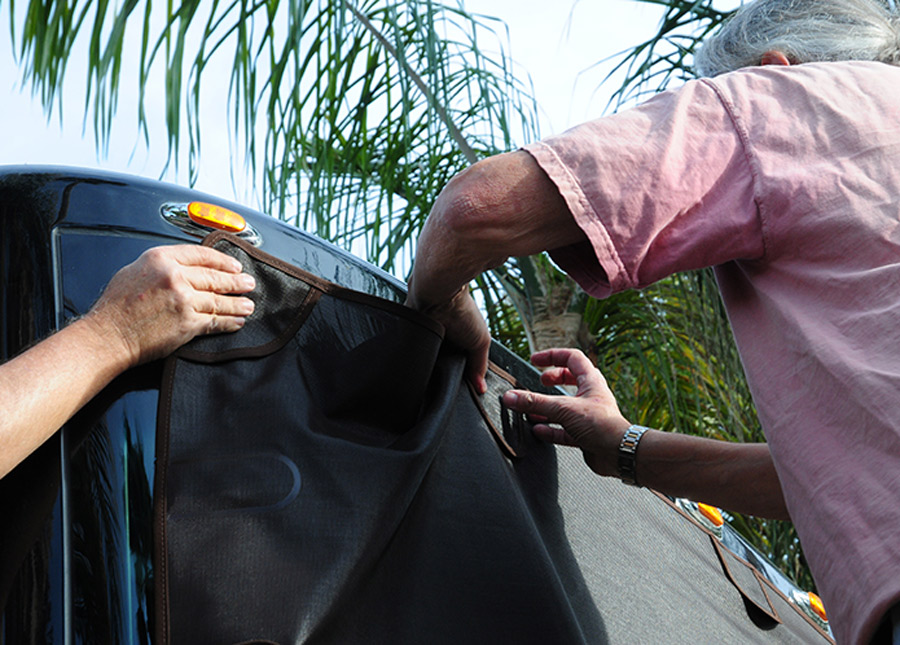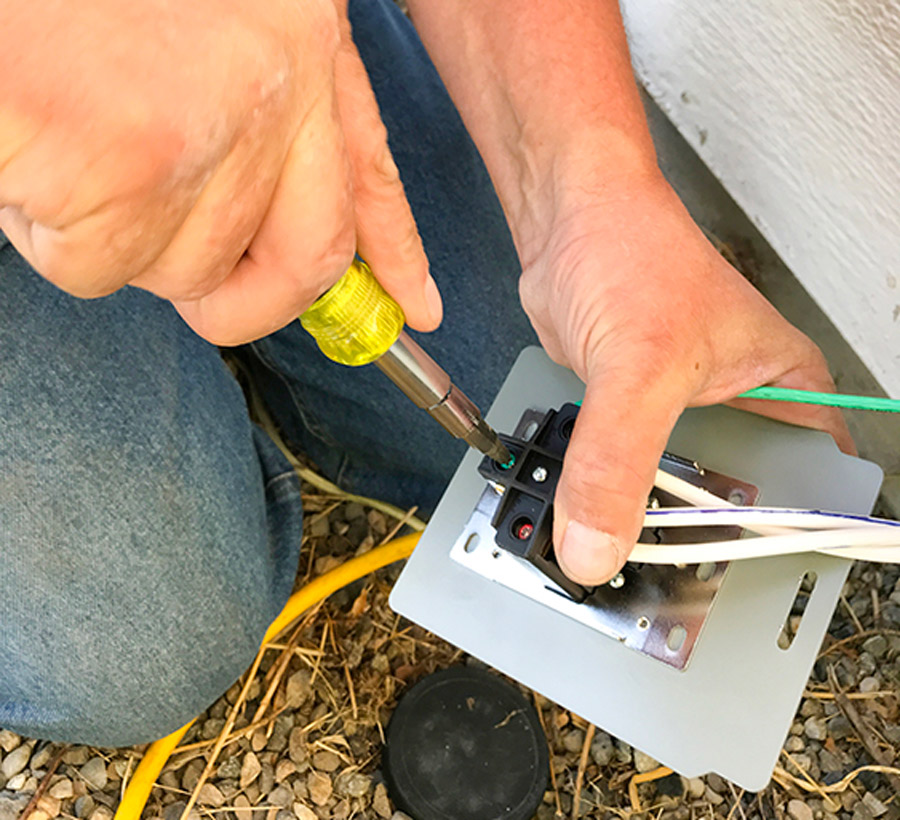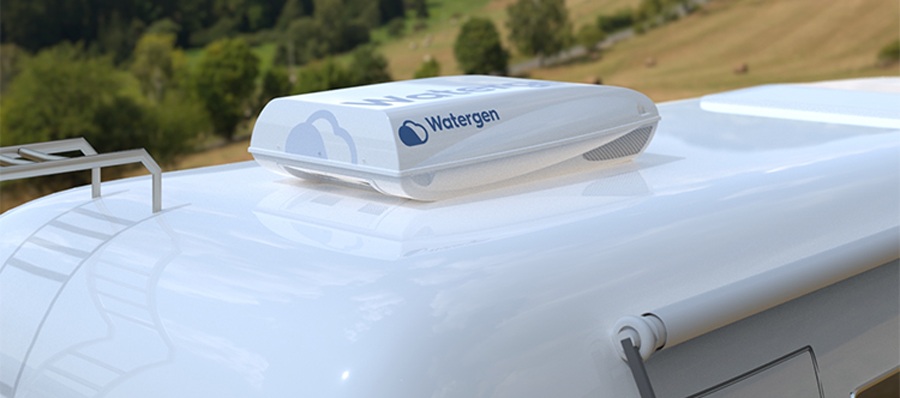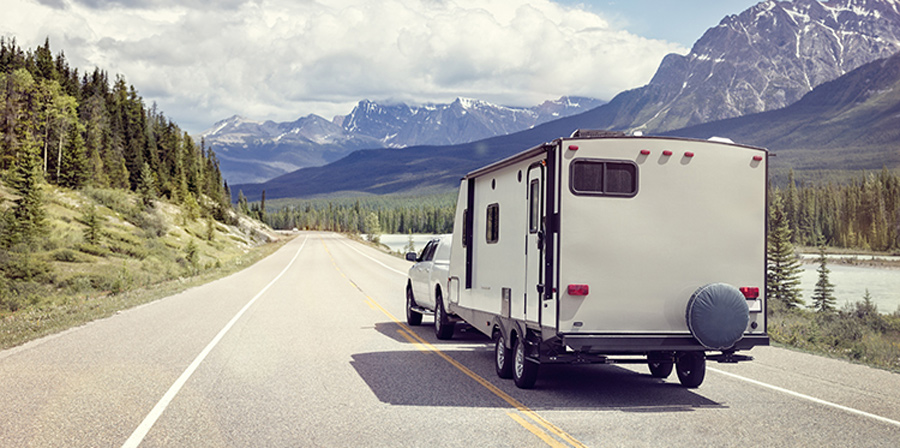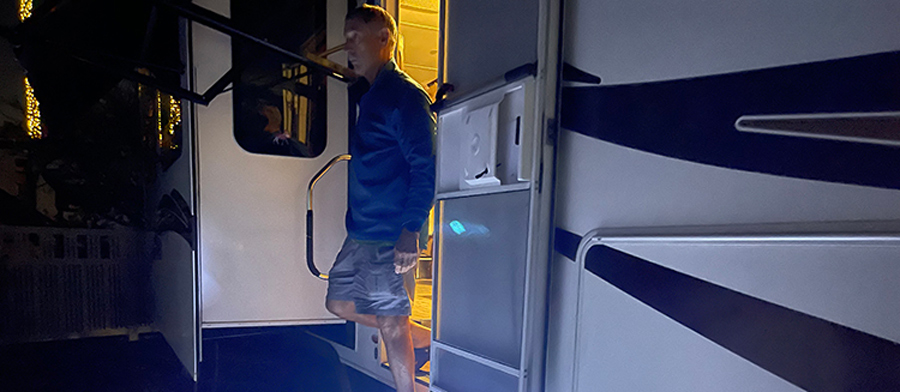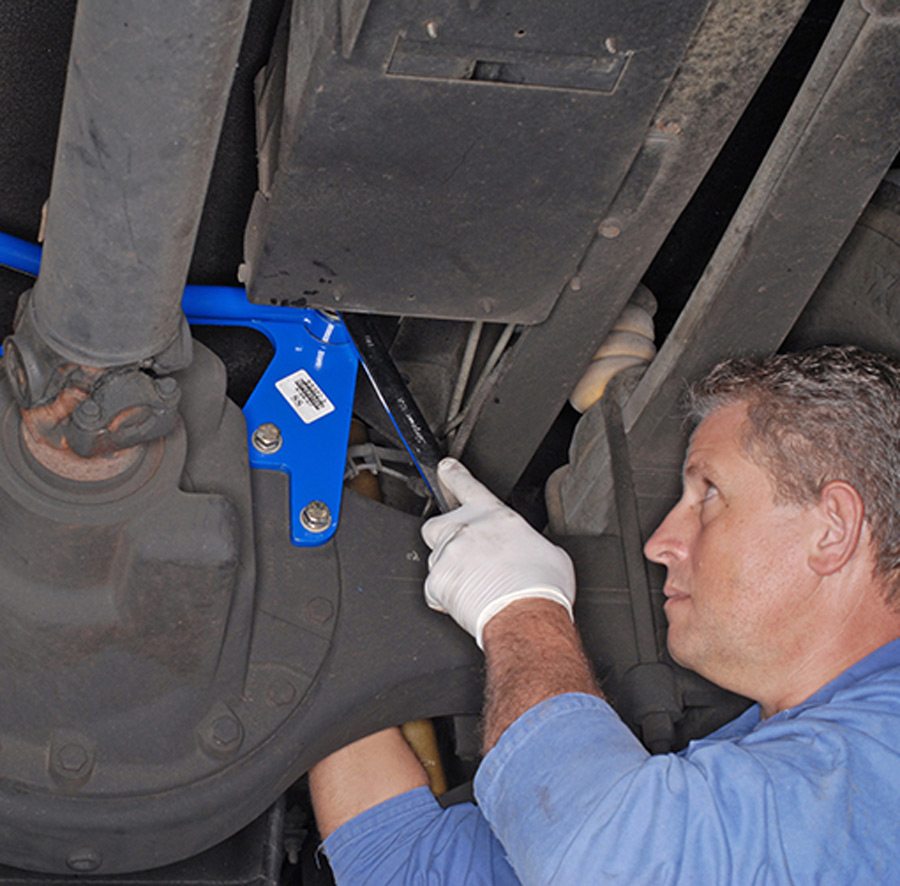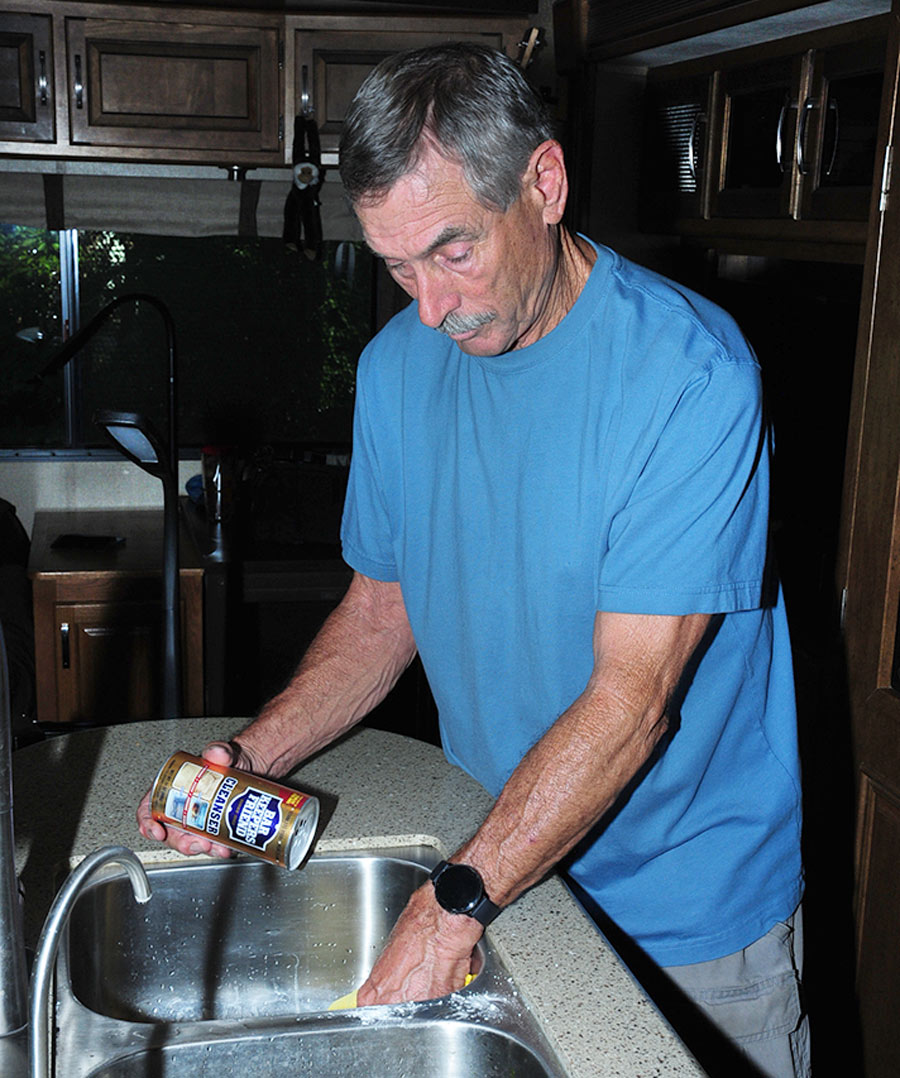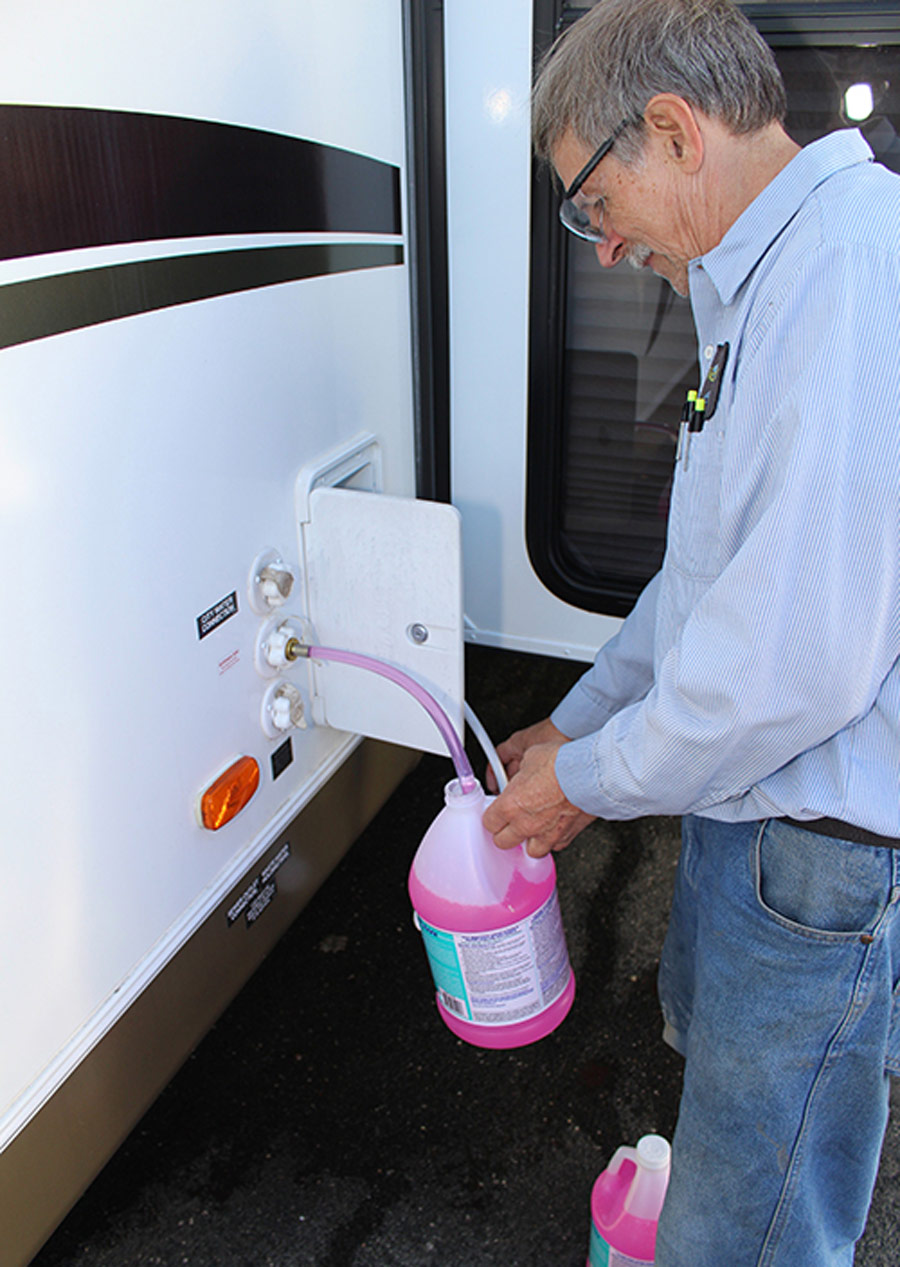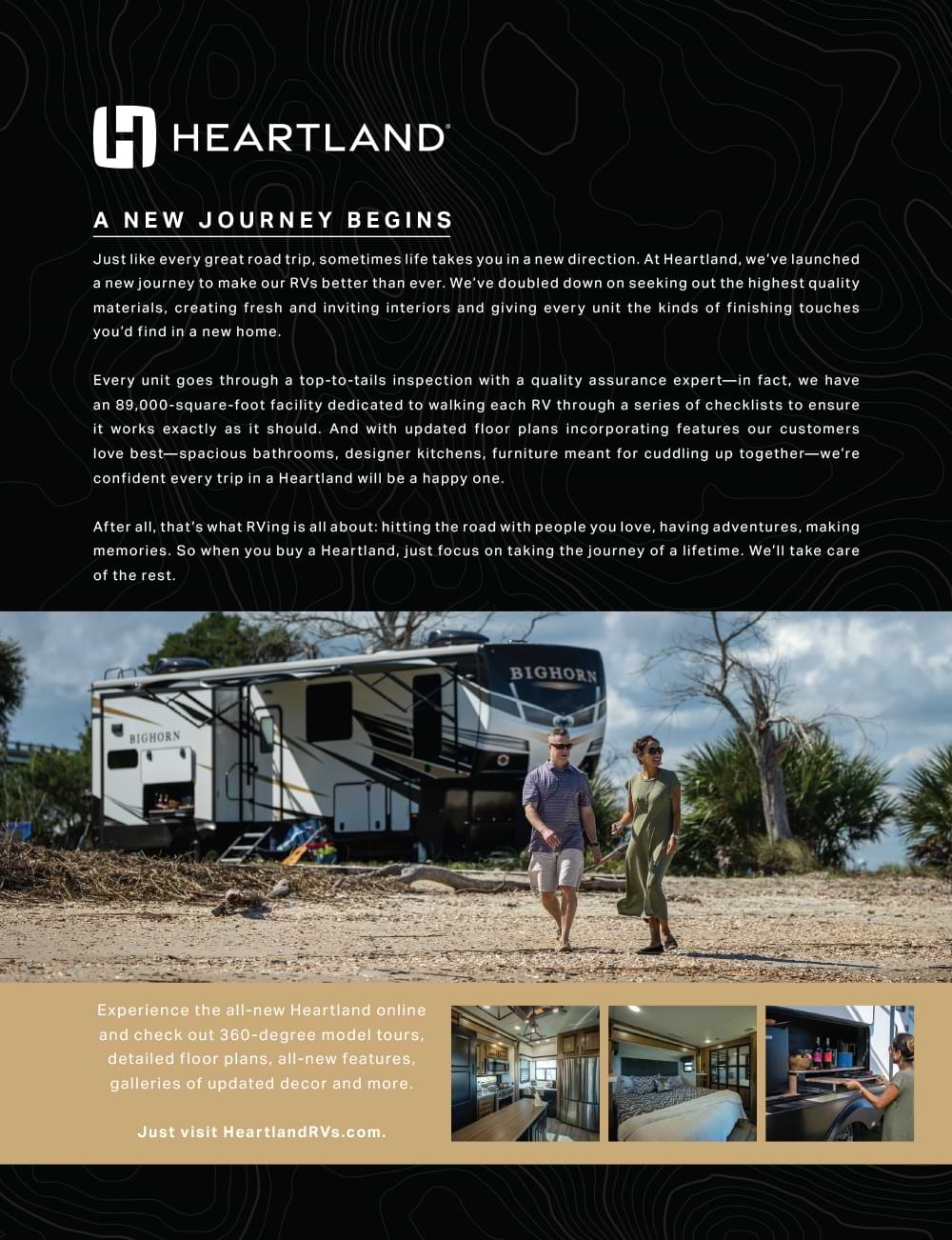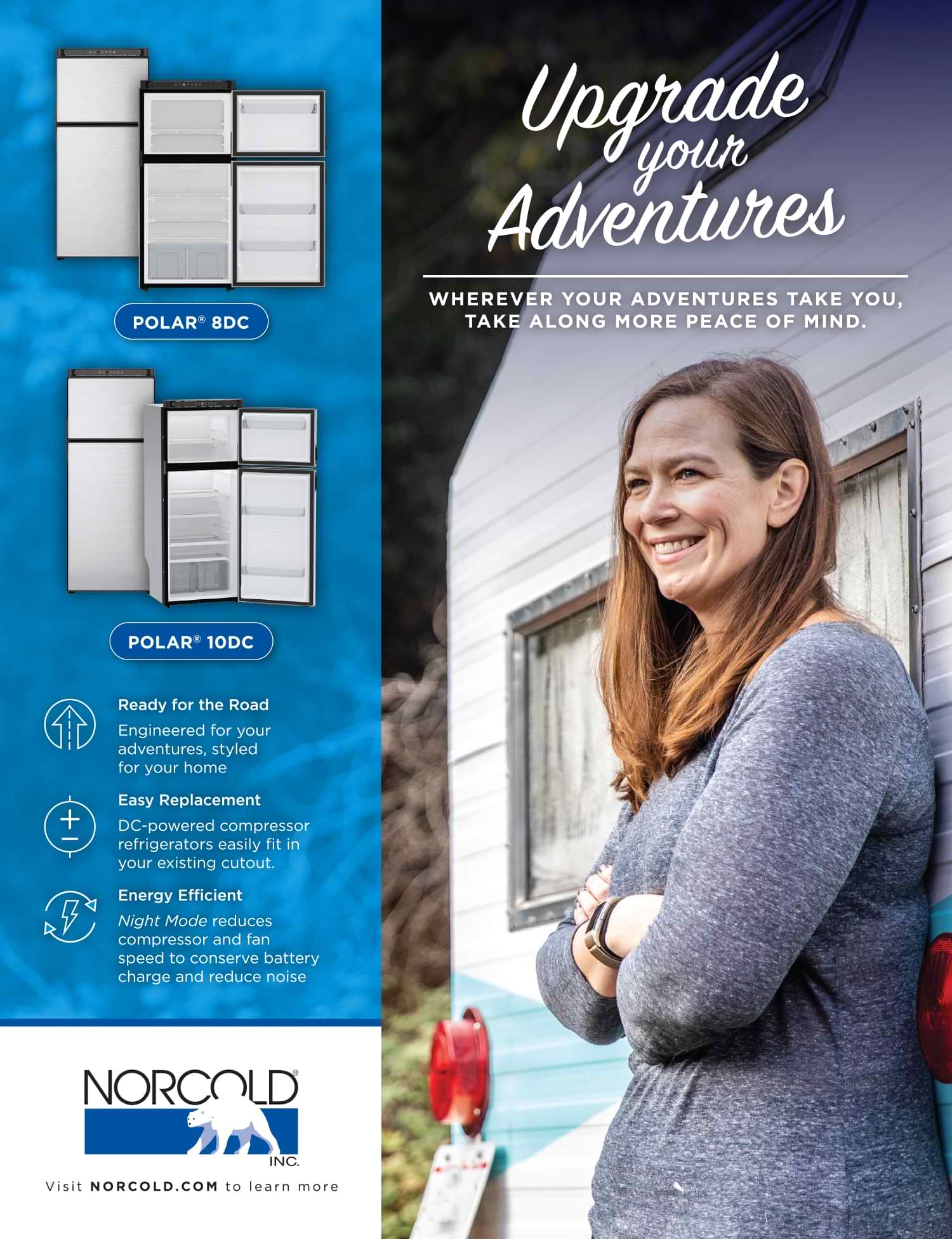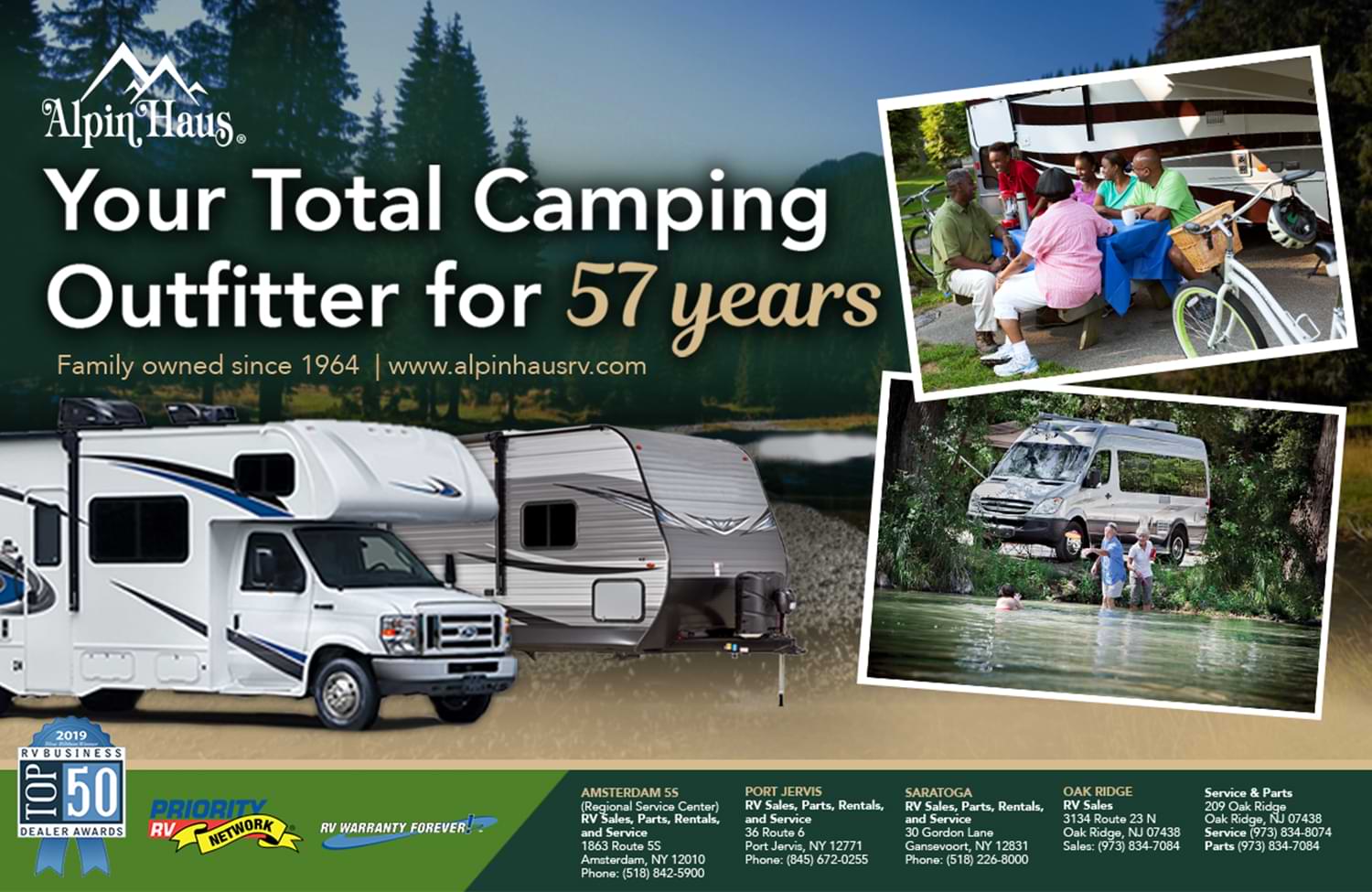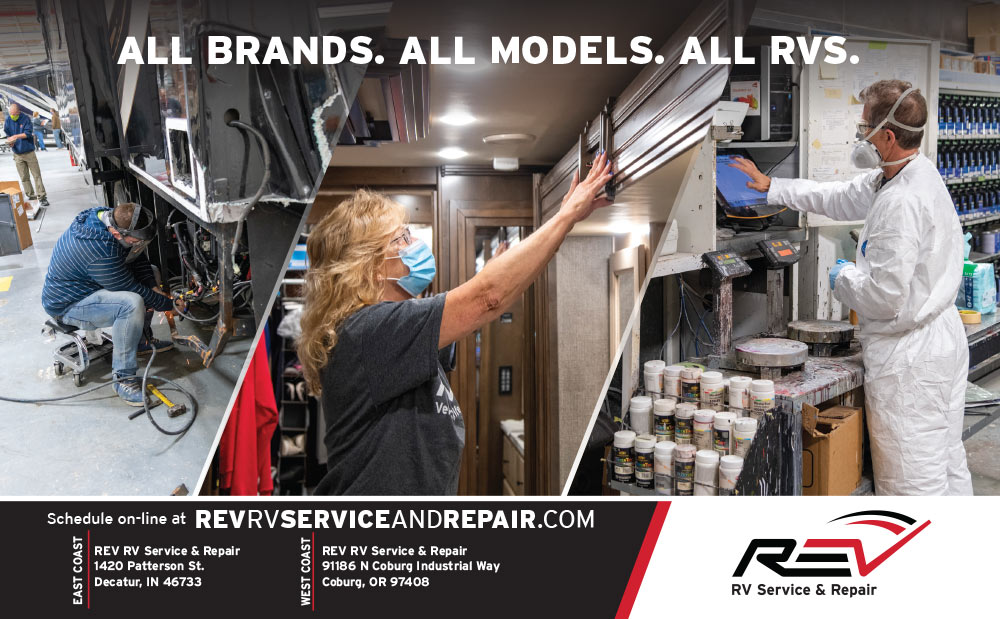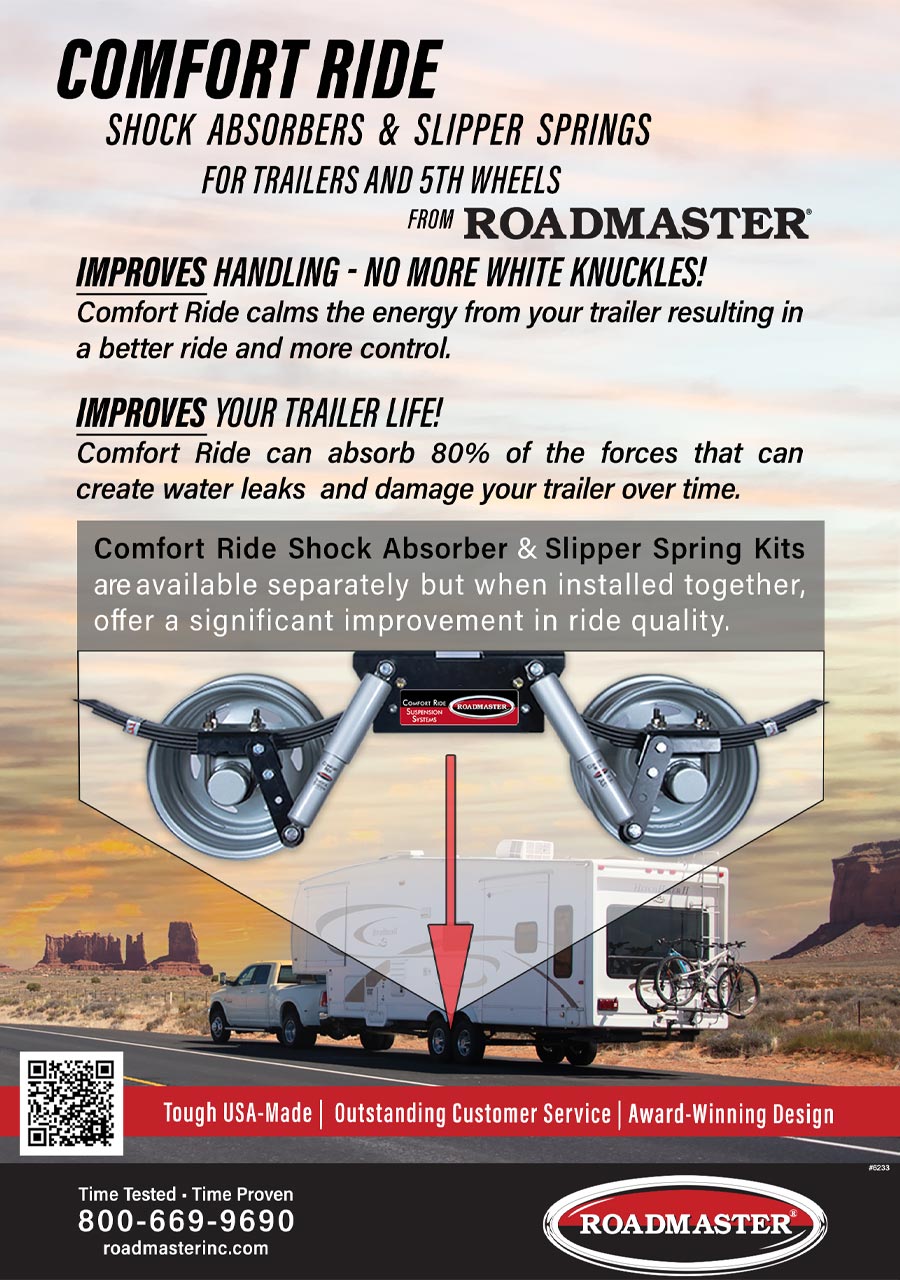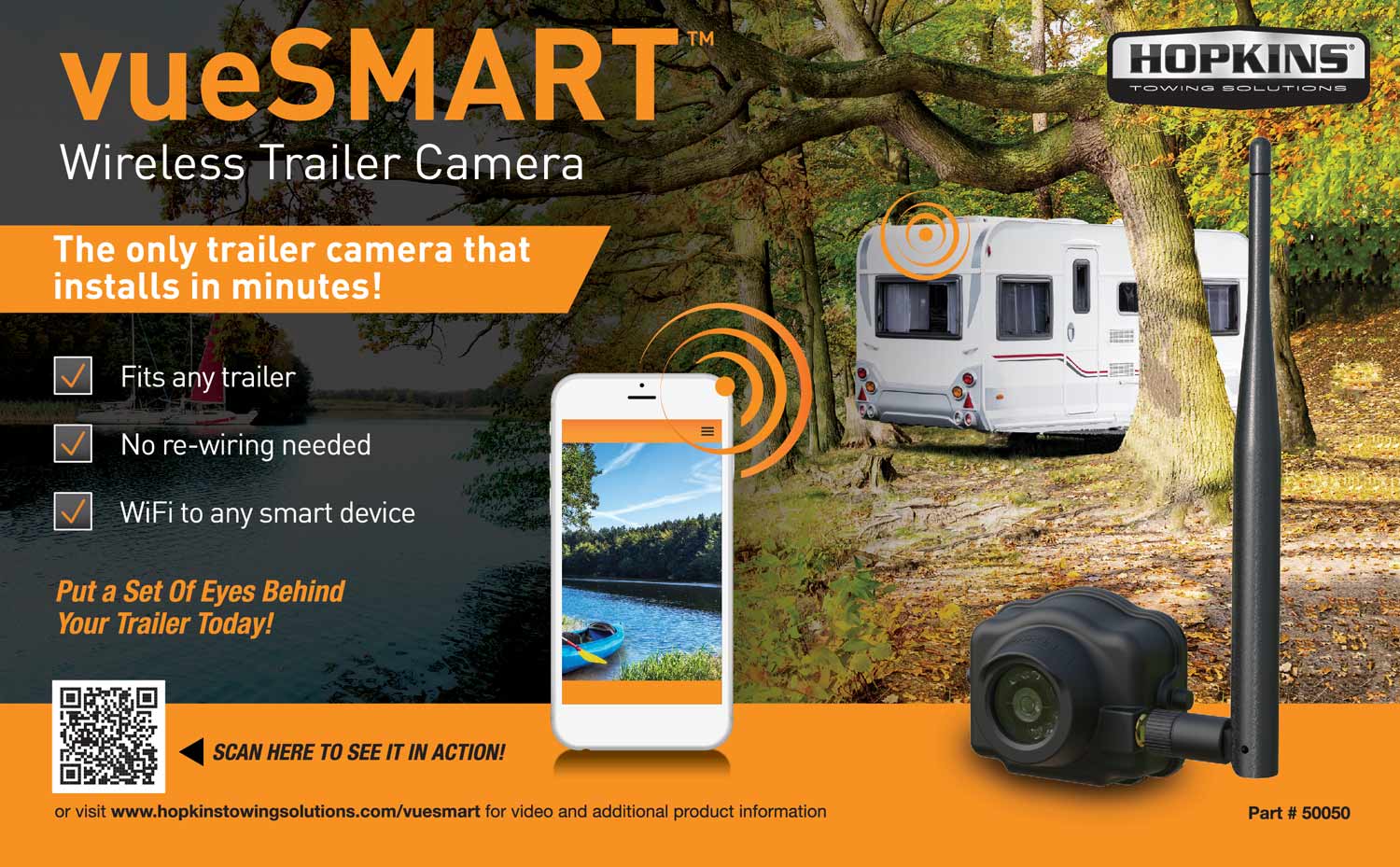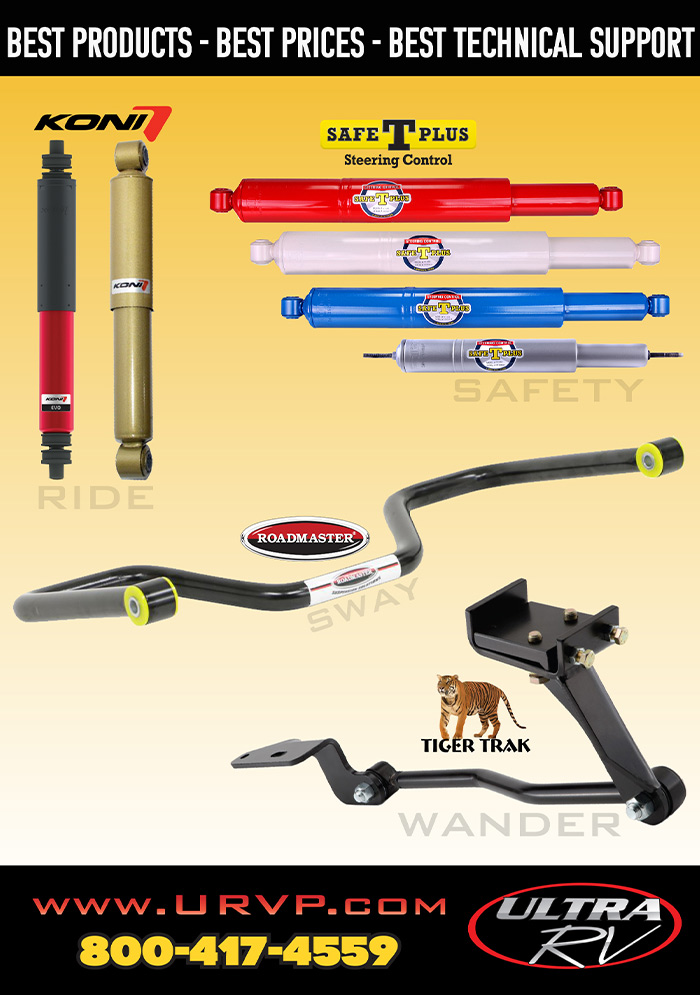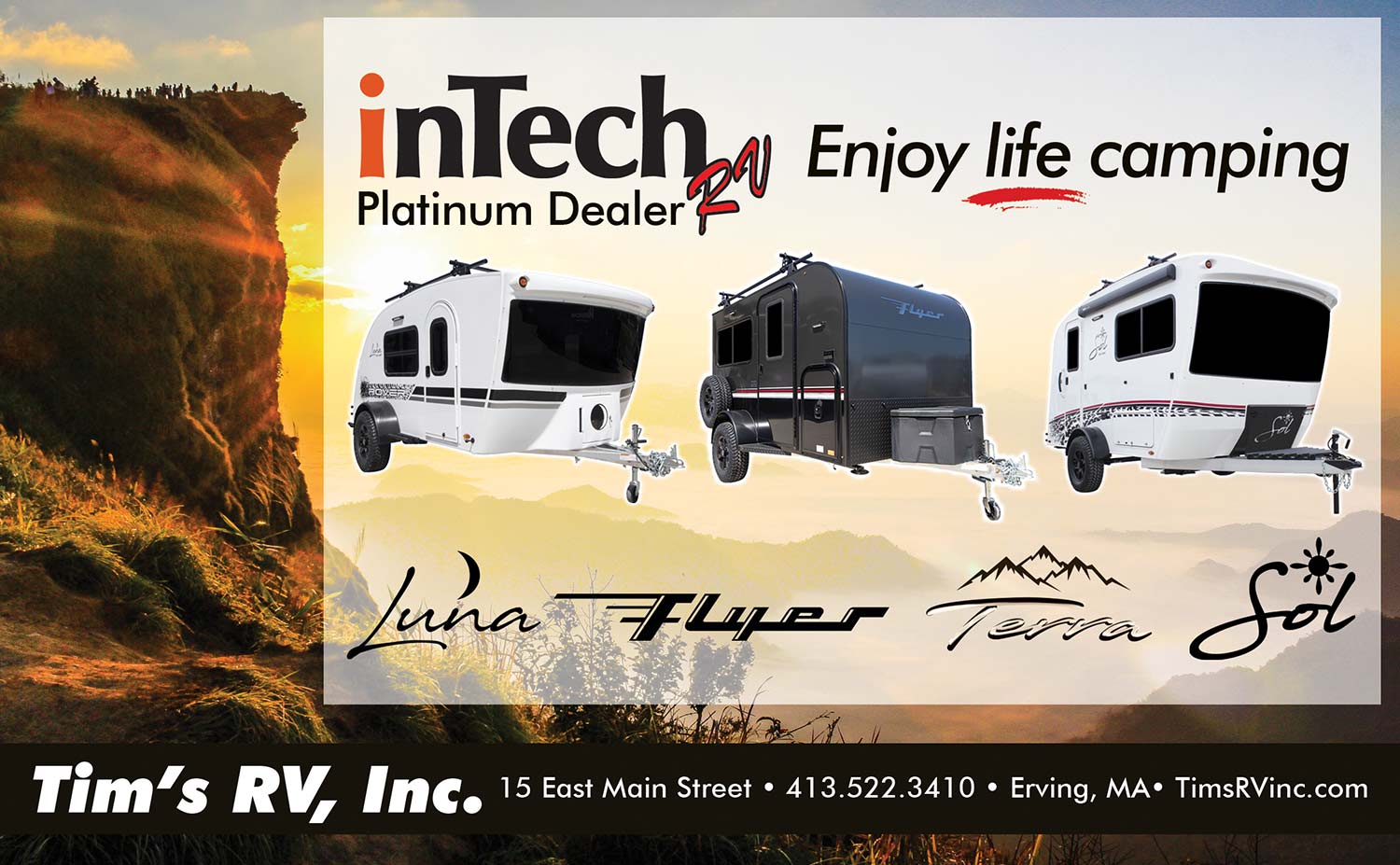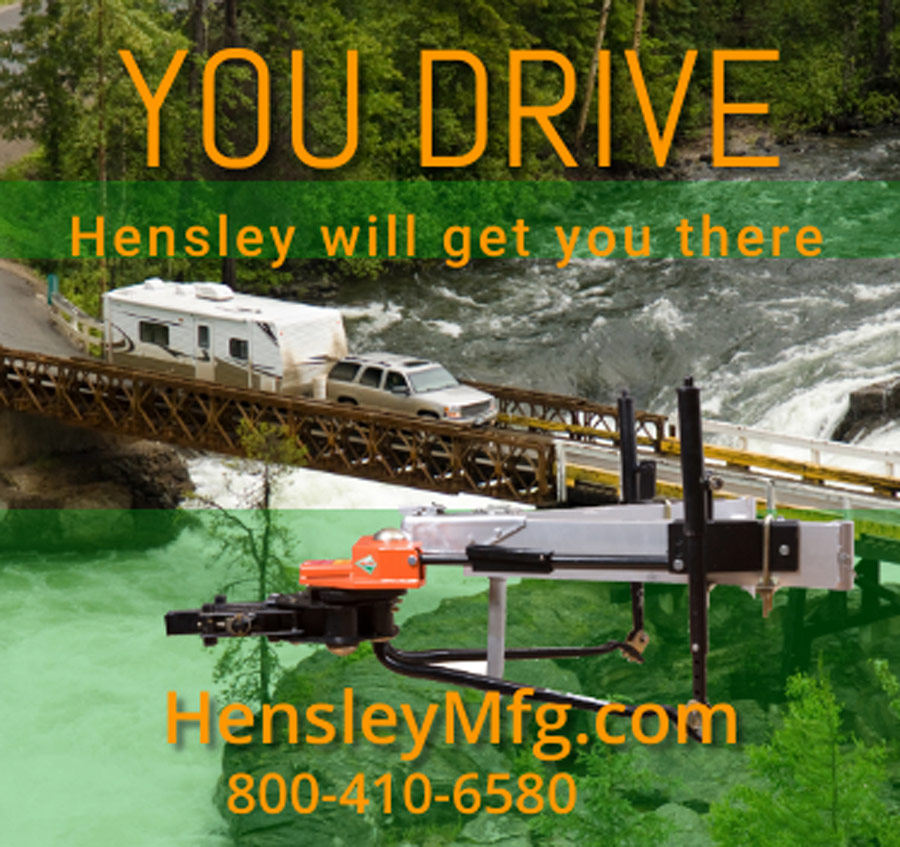Subscriber Access Only
Special Offer
Get 1 year of RV Enthusiast Magazine for just $9.99
Unlock My Offer No ThanksAlready a subscriber? Click here to access full issues.












Off-grid Capable
Heated Enclosed Holding Tanks
Ready to Roll Anytime & Anywhere

Backing up into a campsite is tough enough — doing it all by your lonesome is even more aggravating. Positioning your hands at the bottom of the wheel and turning it in the direction you want to go helps — but adding side-mounted cameras to a rear-view back-up system can really mitigate surprises.
Motorhome windshields offer great views — when you want them. However, that usually means that strangers can also see inside. A Magne Shade adds privacy without eliminating outside panoramas — plus, it blocks about 90% of the sun’s harmful UV rays and a lot of its heat in the process.
Want to put your RV into service as “guest quarters” when visitors arrive at your brick-and-mortar house? If you want the RV to provide more than emergency accommodations, you’ll need to install a 50-amp shore power outlet for your RV at home. Here’s how to go about achieving it.
Once upon a time, there was more than just one Class A gas chassis to choose from — and those Chevrolet P32 underpinnings continue to support thousands of RVs on the road. Unfortunately, these chassis were never known for their handling — but restoring driver control may just require a few select parts.
No matter which manufacturer built a Class A gas chassis, they tend to ride like buckboards. Ride and handling in these popular motorhomes can usually be improved — or even solved — with a few bolt-on items. We’ve identified seven component groups that help tame these gassers.
With fall in the rear-view mirror, it’s probably time to put the RV away for the colder months. Just don’t put it away dirty. None of us really like housework, but cleaning the rig’s living space now with these tips means that you’ll return to a clean, fresh interior come springtime.
Planning a vacation? Museums are a great addition to any trip. Those historical repositories dedicated to vehicles tend to command even greater attention. Here’s a lineup of the best transportation museums in every state you can drive to — and possible parks to stay at in their vicinity.
Water is the lifeblood of humanity — and access to it is a lynchpin of RVing. Leave it in your RV’s plumbing system when the temperature drops below freezing, though, and you’ll discover how expensive such an oversight can be. Winterizing your system is essential to preventing very costly damage.
(800) 830-9729 ext. 3
[email protected]
EDITOR – Bruce Hampson
(574) 584-4616
[email protected]
TECHNICAL DIRECTOR
Chris Dougherty
(800) 830-9729 ext. 5
[email protected]
TECHNICAL EDITOR – Chris Hemer
(800) 830-9729 ext. 6
[email protected]
SOCIAL MEDIA DIRECTOR – Jim Mac
(800) 830-9729 ext. 7
[email protected]
ART DIRECTOR – MIKE ACCUARDI
[email protected]
120 Atwater Road, Springfield, MA 01107
RV Enthusiast is published monthly by RVE Media Group Inc., 3425 East Golden Valley Road, Reno, NV 89506. RV Enthusiast magazine is copyrighted in the United States, Canada, Great Britain and other countries. All rights reserved. Permission to reprint or quote excerpts considered on an individual basis and granted only by written request. Advertising rates and Editorial calendars provided upon request.
 AFFILIATE NOTICE: RVE Media Group LLC provides links to vendors and products, such as an Amazon Associates account, for informational purposes, but that may provide a commission if you purchase from that link. We often label these links with language that provides transparency if the destination is an advertiser, affiliate, or partner. Products are often provided to RVE at little/no cost for editorial testing purposes by vendors/suppliers. Under no circumstances does this affect the results of the test or install as published in RV Enthusiast. Sponsored content is identified as such directly on the content.
AFFILIATE NOTICE: RVE Media Group LLC provides links to vendors and products, such as an Amazon Associates account, for informational purposes, but that may provide a commission if you purchase from that link. We often label these links with language that provides transparency if the destination is an advertiser, affiliate, or partner. Products are often provided to RVE at little/no cost for editorial testing purposes by vendors/suppliers. Under no circumstances does this affect the results of the test or install as published in RV Enthusiast. Sponsored content is identified as such directly on the content.
PRIVACY POLICY: Our complete privacy policy can be found at https://rventhusiast.com/privacy-policy/

Year Round Camping Comfort
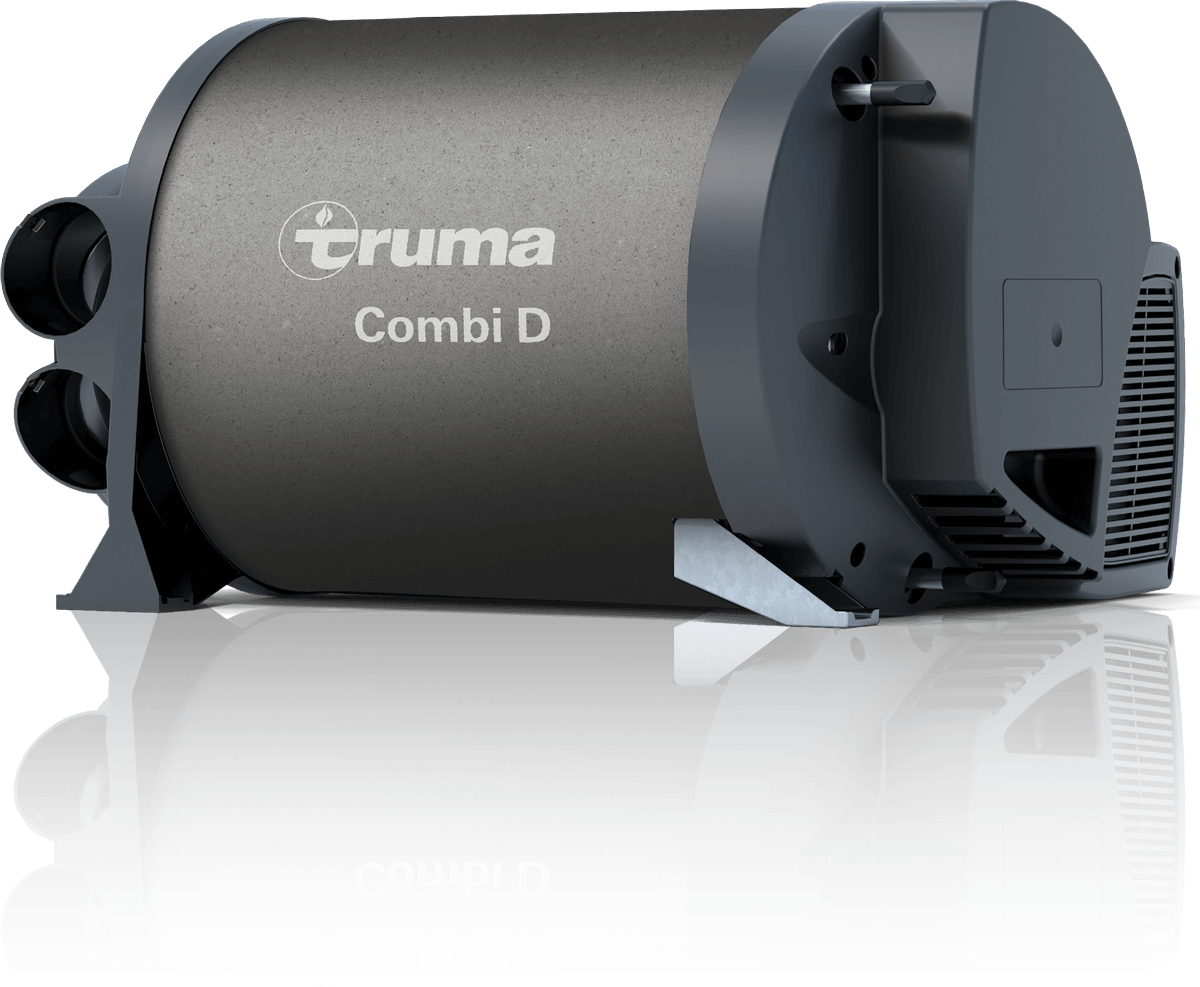
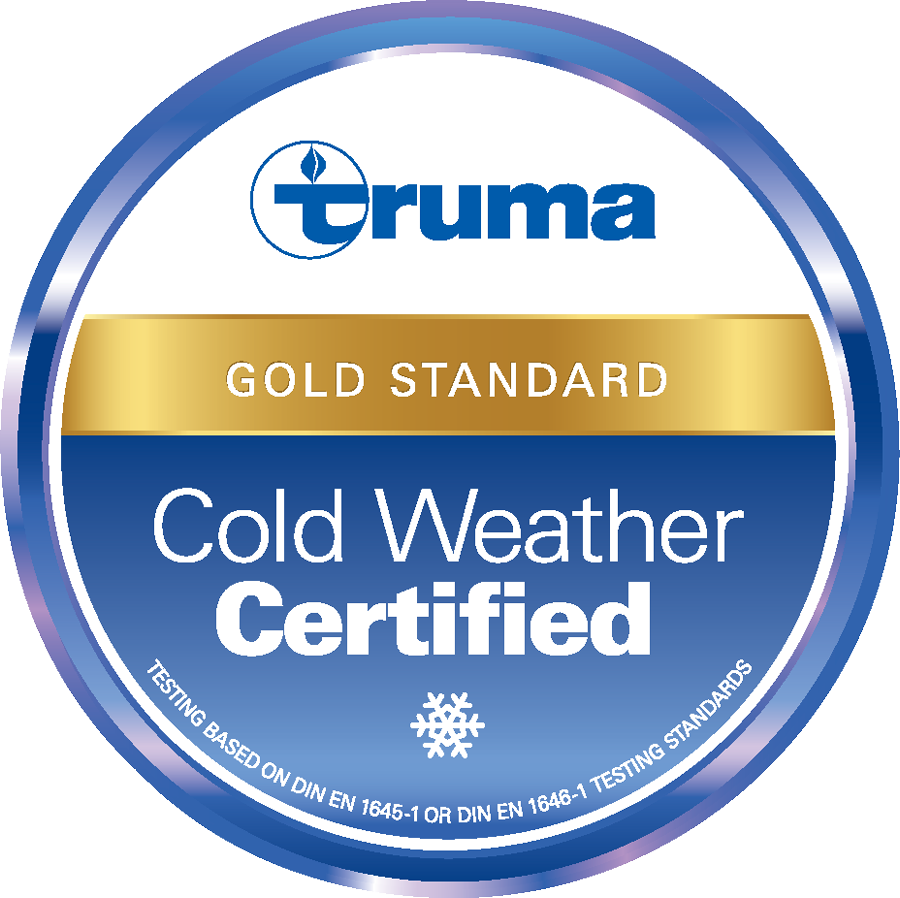
’m going to step away from my comfort zone for a moment to reflect on a target of all that we do here at RV Enthusiast — because it really doesn’t matter how well you maintain your RV if you can’t find a place to enjoy it.
Yes, I’m talking about RV park/campground sites — or, more accurately, the management of these sites.
For years, the RV and campground industries have touted camping as a relatively inexpensive way to vacation. In fact, the cost of airlines, hotel rooms and rental cars was Exhibit A. By comparison, Exhibit B — an RV trip — could be enjoyed for a fraction of those costs. And yes, it still can — but the gap is closing.
There simply are not enough campsites to accommodate everyone, a situation that’s only worsened due to the jump in the popularity of RVing as a way to continue to travel during the pandemic. Unfortunately, a growing number of park owners apparently now see RVers less as guests than as a captive audience.
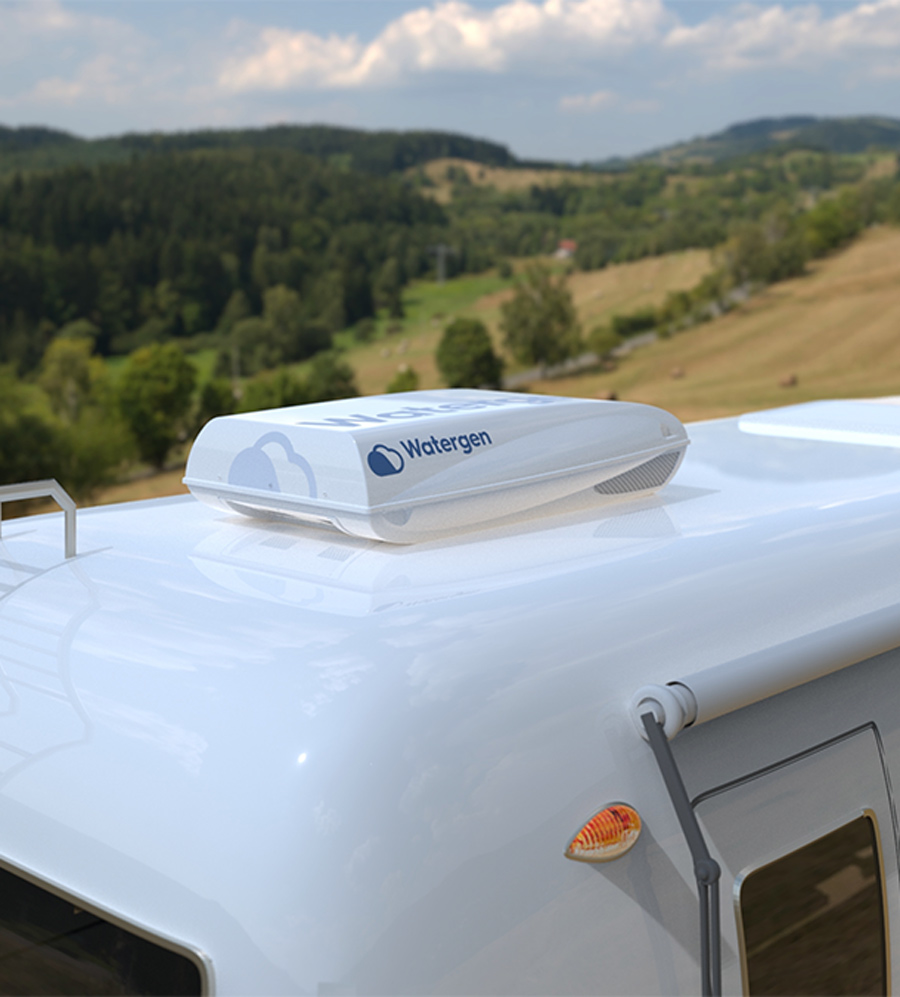
Scheduled for release early next year through select Camping World locations, the “Watergen ON Board” system harnesses humidity in the air to provide up to 13.2 gallons (50 liters) per day of fresh, clean drinking water. Watergen’s globally patented “GENius” system for water extraction is the first heat exchanger to be composed of food-grade polymers, while the multifunction filtration cascade combines with proprietary “high end treatment technologies” followed by a germicidal UV lamp; vital minerals balance the water PH to achieve both high purification and “tasty” drinking water that complies with EPA and Federal Drinking Water standards.
everything down like you’re
expecting an earthquake.
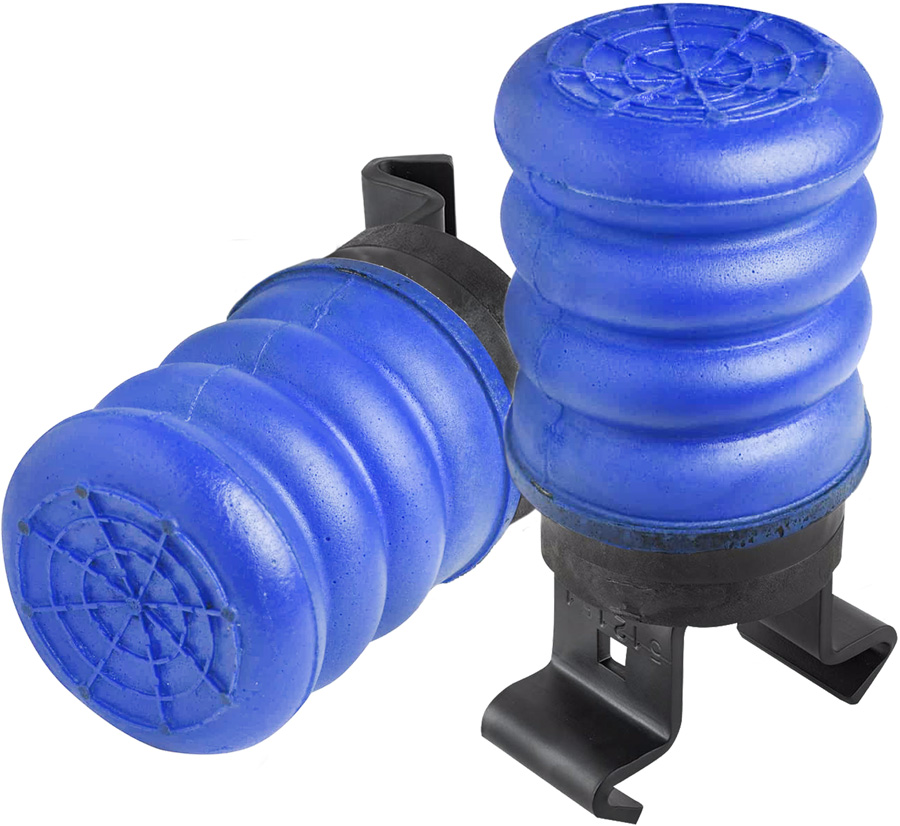

This results in an entirely different driving experience when you’re towing your moving house. More control. More comfort. More vacation.
TECHNICALLY SPEAKING – Q & A
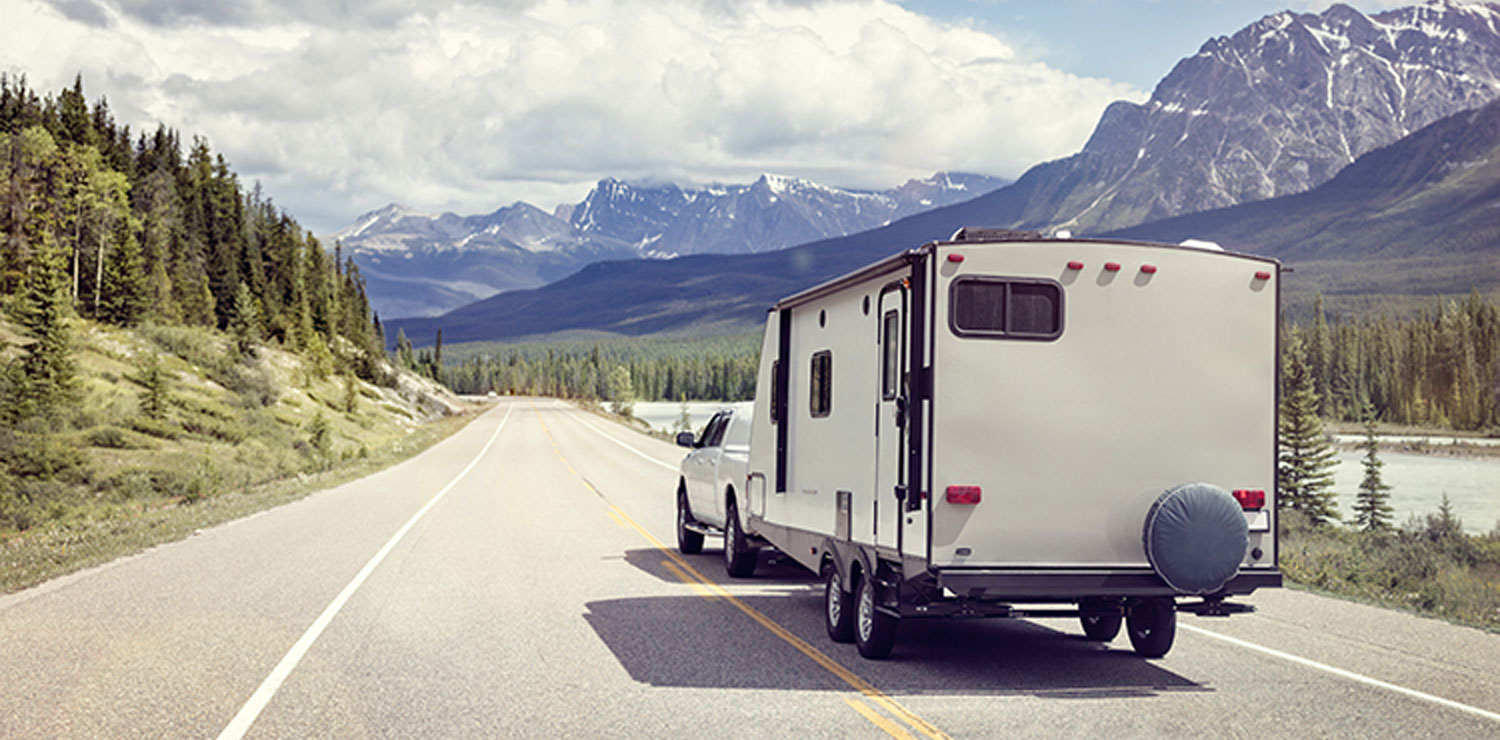
— Jennifer Siebeck
There are a number of ways towing can cause anxiety — from hitching to towing and backing/parking. Today’s vehicles are equipped with back-up cameras that can make hitching up a whole lot easier — and Ford offers an option to do it for you. But if your vehicle is older and/or does not these features, there are a number of aftermarket cameras on Amazon and etrailer.com that will do the job. If it’s backing into campsites that freaks you out, go with a product like the Hopkins vueSMART wireless trailer camera, which will provide a view from the back of the trailer.
Towing a trailer is something that makes a lot of folks uneasy, but that’s usually because the trailer hasn’t been properly loaded, the hitch not correctly set up, or the trailer is too heavy for the truck. Travel trailers need at least 10% of the trailer’s total weight over the hitch or they can suffer from instability. As mentioned above, we cover this topic in detail in the article, “Worth the Weight” in the May issue. Use a correctly rated weight-distributing hitch and make sure that it is properly set up (see Travel Trailer Hitches and Hitch Ratings, also in the May issue). Finally, get yourself a sway control if you don’t already have one — this will go a long way towards making your travels angst-free.
— Chris Hemer
Out of the Darkness

JHBOX solar motion light does a good job of illuminating all the rungs on the entry steps. Light will come on when the electric eye senses motion and stays on for 25 seconds.
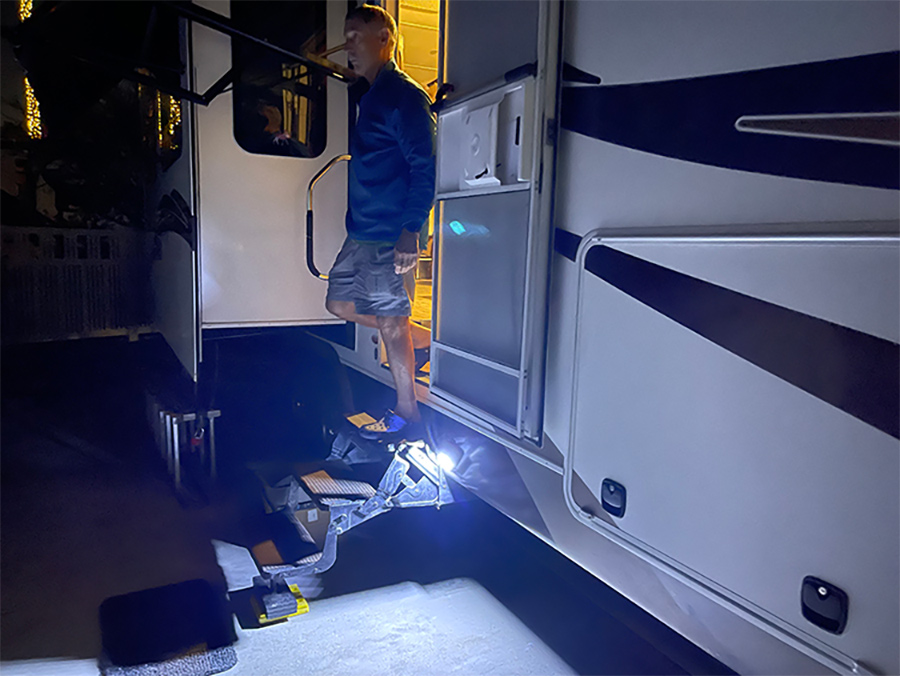
JHBOX solar motion light does a good job of illuminating all the rungs on the entry steps. Light will come on when the electric eye senses motion and stays on for 25 seconds.
ver since Thomas Edison invented the light bulb, people have been on a constant quest to find the best way to illuminate dark places. First came incandescent lights, which were hugely inefficient but lit up the world. Fluorescent fixtures, which produced less heat and could generate more light from less power, hit the market in 1934, though it wasn’t until the 1980s when they began showing up anywhere but businesses and warehouses. And then came the light-emitting diode (LED).
To say the invention of LED lighting was a giant leap toward efficiency and cost effectiveness is an understatement. The fact that LED fixtures run cooler, are brighter, last a lot longer, are relatively inexpensive and can be purchased in a variety of color (light) temperatures makes it possible to identify a number of places where added lighting will improve livability and safety. For RVers, lighting up the patio, the entry steps and storage compartments (inside and out) are logical places for additional light — if you go on the Internet you’ll find hundreds of imported products with wacky names that supposedly fit this bill. But not all are created equal; after years of testing under full time usage, we can recommend three products that perform as advertised, are reliable and inexpensive.

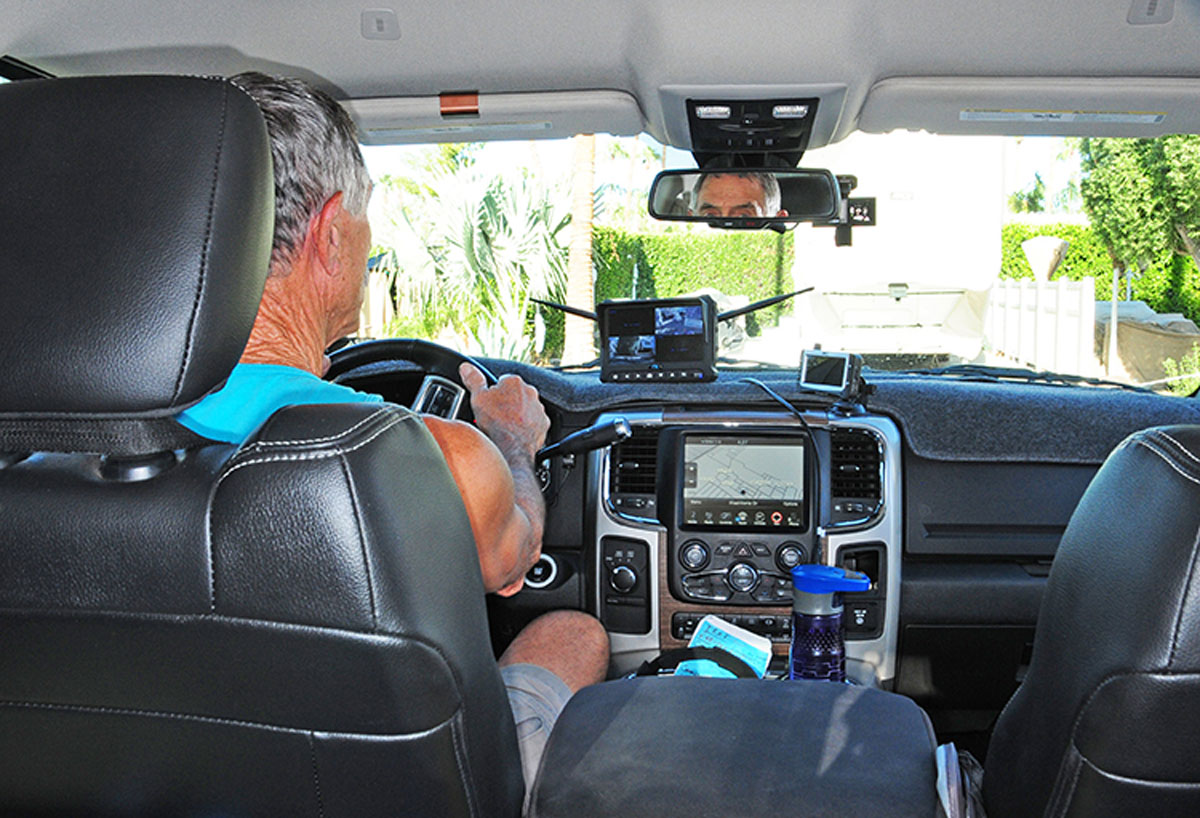
acking an RV travel trailer or fifth wheel into a site, the side of a house or any other place where access is tight can be challenging. For some outdoor enthusiasts, just the thought of backing up sends shivers down their spine — sometimes to the point where they opt for a motorhome just to keep from making uncomfortable maneuvers. For years, driving experts have touted the importance of practicing backing maneuvers in an open lot to become acclimated to the task. It’s great advice — but those inevitable blind spots can still take their toll on a driver’s nerves. Relying on a partner to guide the driver helps mitigate the problem, but can sometimes lead to regrettable arguments and unexpected contact with stationary obstacles. The situation is even more difficult when backing a big rig.
Fortunately, wireless cameras with advanced features have taken some of the edge off of RVing in reverse. The latest wave of large color monitors provides greater definition than products of just a few years ago. However, being able to see what’s behind you doesn’t mitigate the lack of vision when turning — especially on the blind side where vision via the mirror is compromised because of the articulation of the trailer in relation to the tow vehicle. There is a solution, though — and it’s not trading up to a motorhome. Adding additional cameras is a game changer — and if you already have a back-up vision system with provisions for side cameras, mounting the additional hardware can be achieved in just a few hours.

xpansive motorhome windshields offer splendid views of the road and scenery. Unfortunately, they also let in a lot of sunlight and heat. It’s just part of the deal; you can’t have that open feeling without some compromises on comfort. Makeshift window covers and standard sunshade material can help — and you can always extend the front privacy shade — but any view to the outside will be completely blocked out, not to mention darkening the cabin.
Magne Shade has just about perfected a sunshade that covers the front windshield as well as applications for the driver-, passenger and entry-door windows — without turning the interior as dark as a tomb. One key is the use of a high-quality PVC-coated polyester fabric that is “porous” in the sense that it’s weaved with innumerable tiny holes that, when installed, diffuse the sunlight entering the RV, providing light without being uncomfortable. It also allows you to see out — but from the outside, passers-by can’t really see in (except at night, when the interior is lighter than the exterior and you will draw your privacy curtains).

iven the wealth of factory-installed and aftermarket solar power systems available to today’s RVs, living off the grid is becoming a lot more commonplace. That said, with all but the most potent systems — or more powerful AC generators — most boondockers still need to forego the comfort of an air conditioner and will need to carefully monitor what appliances are used at any one time to monitor amp draw and prevent overloading their power supply.
If you want all the bells and whistles while camping or using the RV in your driveway when guests arrive, you’ll still need a major power source — in other words, hookups. Shore power, that source of 120/220-volt AC (alternating current) from a campground pedestal or your home’s electrical system, allows you the ability to run all the “home” AC electrical gear as well as larger RV electricity hogs like A/C units, residential appliances, heaters and microwaves.
Typically, small- to medium-sized RVs are equipped with a 30-amp shore power connection, while larger RVs require a 50-amp power supply to keep things inside operating smoothly because they usually have higher amp-draw residential appliances and a pair of roof-mounted A/C units.
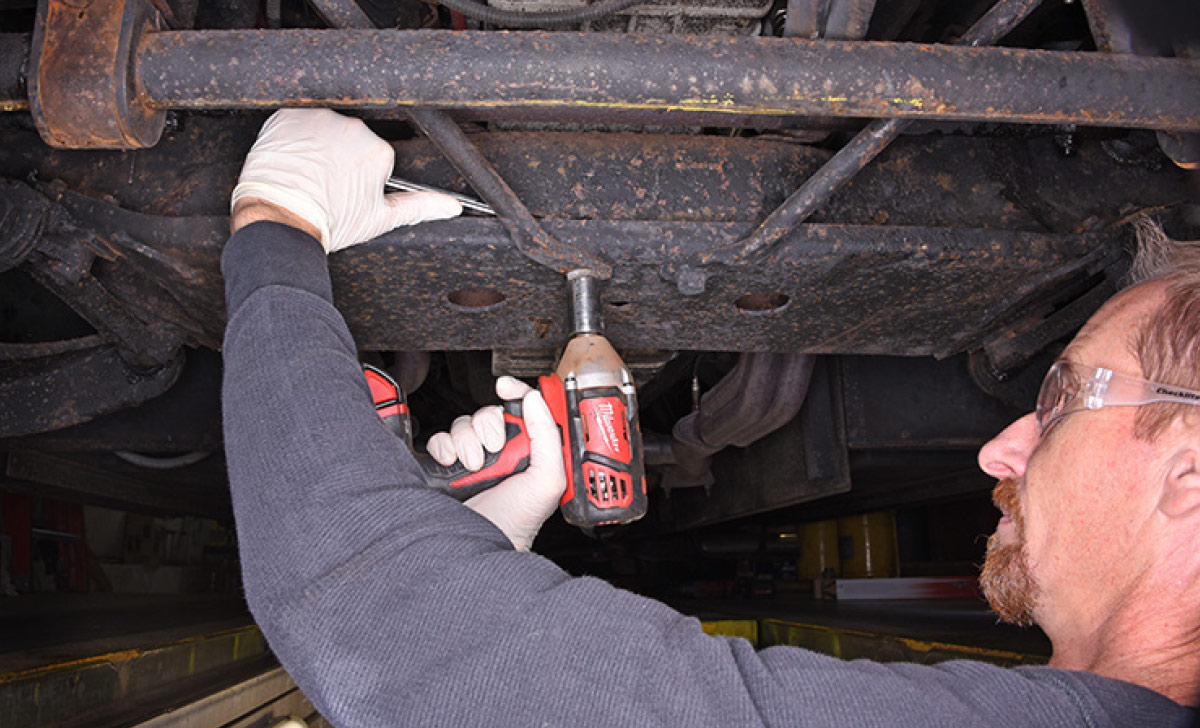
Photos by the author
nce upon a time, there was more than just one Class A gas chassis to choose from. Long before Ford established dominance with its venerable F-53 chassis, General Motors (GM) offered an alternative with its wildly popular P32 chassis — featuring big-block Chevrolet power and front coil springs that offered a smoother ride than what the Ford could provide. Workhorse Custom Chassis picked up where GM left off with its W-Series chassis, but the company suffered several setbacks in the early 2000s that eventually led to the demise of a GM-powered Class A motorhome chassis.
The good news is, there are still tens of thousands of P32-chassis motorhomes on the road and parts are plentiful, making a P32 chassis motorhome a good used RV choice. However, these motorhomes were never known for their handling; in particular, the rear leaf packs allowed the rear axle to “walk” from side to side, contributing to that queasy “tail wagging the dog” sensation. And the suspension, while offering a softer ride than the Ford, was often too squishy, leading to white-knuckle handling in high winds or when being passed by semi-trucks.

t’s often said that life is a journey, not a destination. This is particularly true for those who travel by motorhome. We all know where we want to go and what we want to see, but it’s the mountain vistas, verdant meadows and roadside attractions along the way that make driving across America so enjoyable.
Unless your motorhome is plagued by ride and handling issues.
When freeway expansion joints sound like muffled explosions reverberating through the chassis, 18 wheelers nearly push you out of your lane or the steering wheel requires constant adjustment just to stay in a straight line, the journey loses some of its cachet. Now, instead of enjoying the passing scenery you’re focused on just getting to your destination so you can put this stretch of highway behind you.

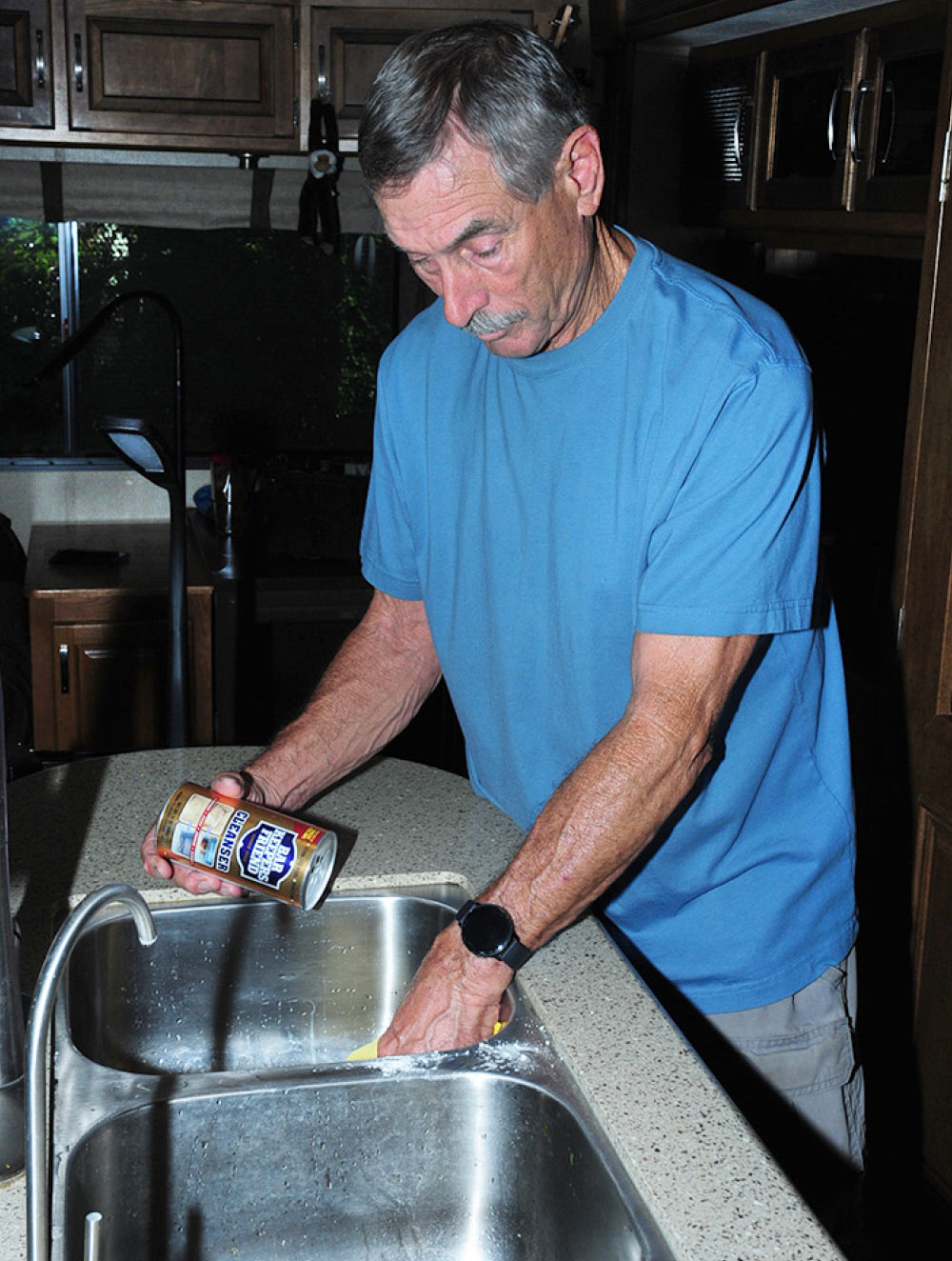
s the travel season comes to a close, now is a good time to think about detailing the interior of your RV before Old Man Winter comes rolling in. None of us particularly like the idea of housework, but cleaning the RV’s living space before putting the rig away for the season means you’ll return to a clean, fresh interior come springtime. Besides, keeping your carpet/floors, furniture and cabinets clean will keep them looking newer, longer.
RV interiors are different from many homes in that they can consist of multiple materials and surfaces, like carpet, fabric upholstery, leather/Ultraleather, tile, stone, fiberglass and wood — and each has its own cleaning regimen. The good news is that it only takes a few hours and a few common household and RV-specific solutions to make your RV sparkle like new inside.

t’s said that Americans have a love affair with their cars, but that’s only partially true. What we have is a love affair with personal transportation — and with the freedom to point those machines in any direction we choose, whenever we choose. Americans love to travel — and when it comes to travel, mostly we love to drive to where we’re going.
That was just as true before the pandemic as it is today. There’s a reason for that: The United States is a big place. The lower 48 states occupy more than 3,119,884 square miles, and more than 2.95 million square miles of that is contiguous land. Add in Alaska — which we can also drive to and through — and the numbers grow another 20% or so. That’s a lot of real estate.
That’s really the biggest difference between RVers in America and our European counterparts. Stateside, we think nothing of traveling from, say, San Diego, California, to Yellowstone National Park for a vacation; it’s a trip of roughly 1,100 miles in each direction. Put another way, it’s about the same distance as Rome, Italy, is to Madrid, Spain. That’s not a drive many Europeans take.

inter. If you enjoy traveling, it sucks — at least, in the northern part of the country.
I’m probably not alone in that sentiment. There’s no denying that traveling in an RV during winter where very cold weather (think snow) prevails — especially for New Englanders like myself — can be difficult. The popularity of “four-season” RVs has led more folks to take their RVs out in the snow, but for most of us, plummeting temperatures are Mother Nature’s reminder that it’s time to put the toys — and the toy haulers, including those without garages — away.
Whether you store the RV all winter or use it for snowbirding or skiing trips, it still needs to be protected from the elements — and understanding the limitations of its water system and pushing back against the freezing cold is essential.
The primary problem doesn’t lie with the PEX, or crosslinked polybutylene, pipe that is used in all new RVs since the new millennium. PEX can withstand freeze damage and high pressure very well. The problem stems from the plumbing connections, water-fed appliances/hardware (faucets, valves, ice makers, shower heads, etc.) and holding tanks.


Lippert’s Floe 636 automatic winterizing system simplifies the process — a lot. First designed and distributed in Ireland for caravans, the system is basically a small air compressor system with a pressure switch and isolation valve that is permanently built into the RV’s plumbing system.
Image credit: Hildene.org
iving in eastern New York for many years presented many opportunities for me to visit nearby Vermont, a state that boasts a wide variety of exciting travel destinations. Rather than focusing on just one city, a driving tour through Vermont will give visitors a much bigger picture of what this state has to offer. This driving tour through the Green Mountain state covers approximately 170 miles and would make a nice day trip for those staying in nearby RV parks — and provide memorable material for more extensive journeys into this popular region.
Manchester, Vermont
Our driving tour through Vermont begins in Manchester, near the southwest corner of the state about 60 miles northeast of Albany, New York. The city, which lies between the Green Mountains to the east and the Taconic Range to the west, with the Battenkill River flowing through the town, was chartered in 1761 and was primarily an agricultural or farming area for almost a hundred years. Farmers struggled to grow crops in this area, and eventually found that the land was best suited as a grazing area for cows or sheep.



